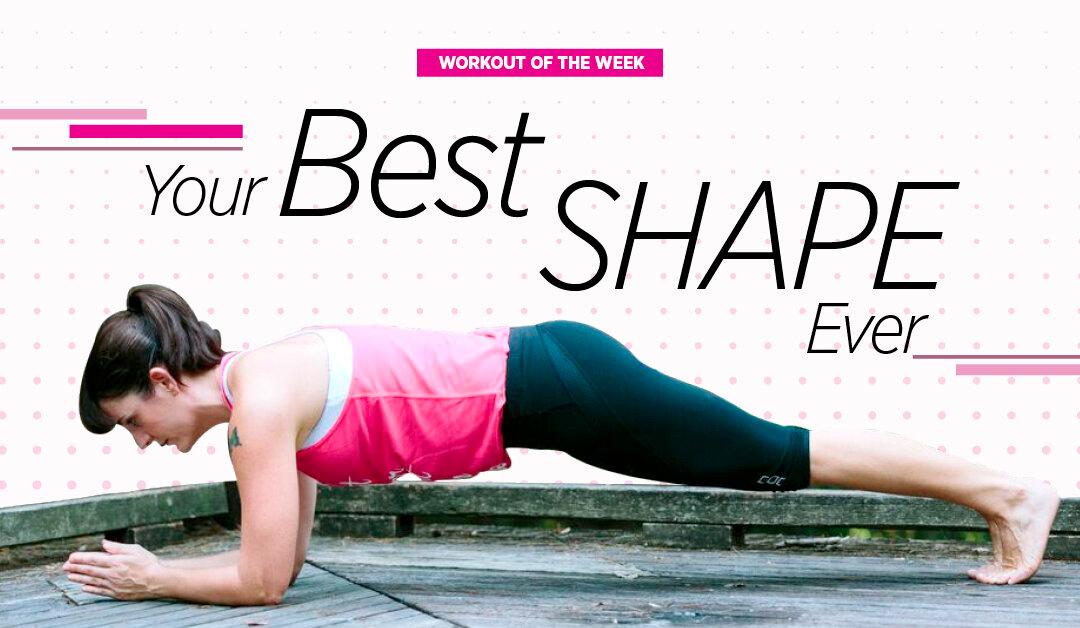Selectively building your exercise sequence so that the moves warm you up well and strengthen all your muscles is key for optimal health and well-being. This sequence is a strength-builder for all the major muscles in your body. It also helps improve balance, stability, and flexibility.
Once you have worked your way through all of the movements, do two more sets of everything, including the Skater jump warmups. Like all of my workouts, this one can be taken with you and done anytime, anywhere, and with no equipment.
Skater Jumps
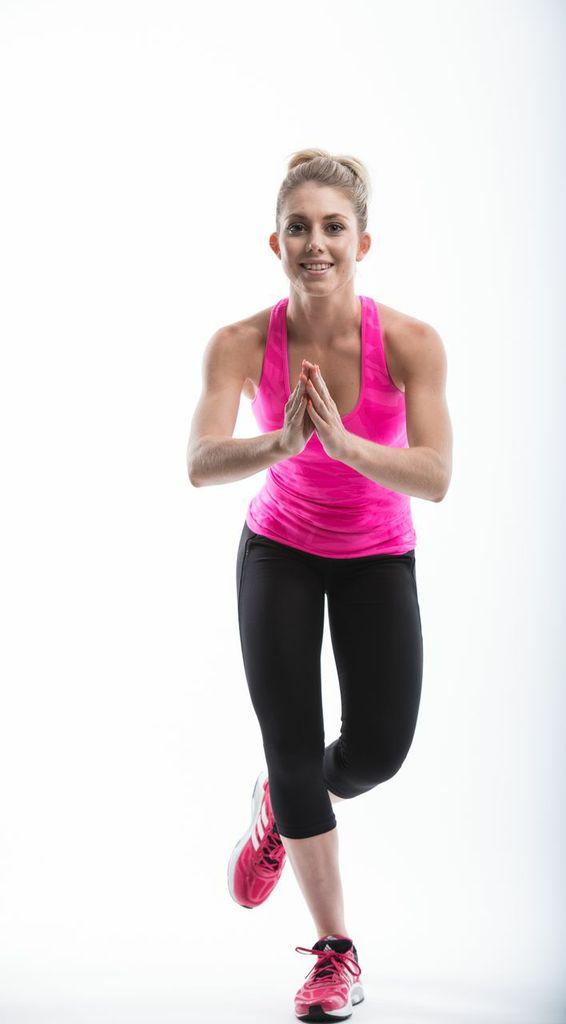
(Willis Lim/photographer, Alana Ford/Model, Brisbane Australia)
This is a good warmup move. It will get your blood circulating and your muscles and joints ready for the workout. A proper warmup means you are less likely to incur injury and will increase your mobility while you exercise.
Skater jumps are also great hip, thigh, and buttock workouts.
1. Imagine you are standing on one side of a 3-foot-wide puddle and you need to jump over the puddle to get to the other side.
2. Start with your weight evenly distributed on both feet. Then jump laterally to the right, landing on your right foot only. The left leg should be tucked behind your right calf. This puts you in a position similar to that of a speed skater, hence the name.
3. Jump back over to the left foot, tucking the right leg behind you. Continue jumping back and forth. Jump for one minute.
Yoga Push-Ups
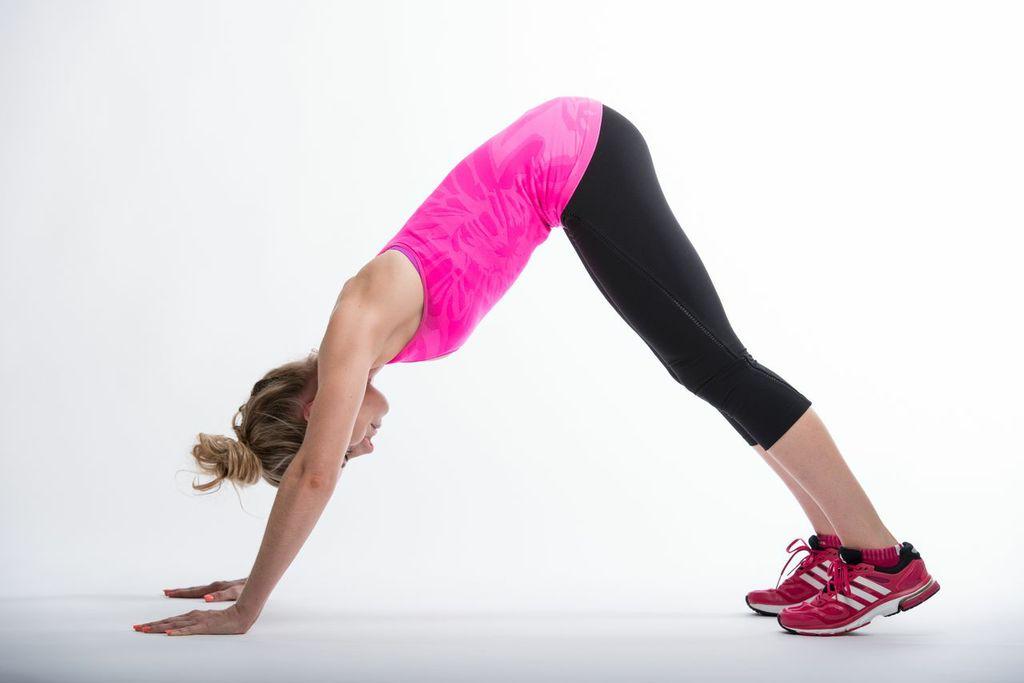
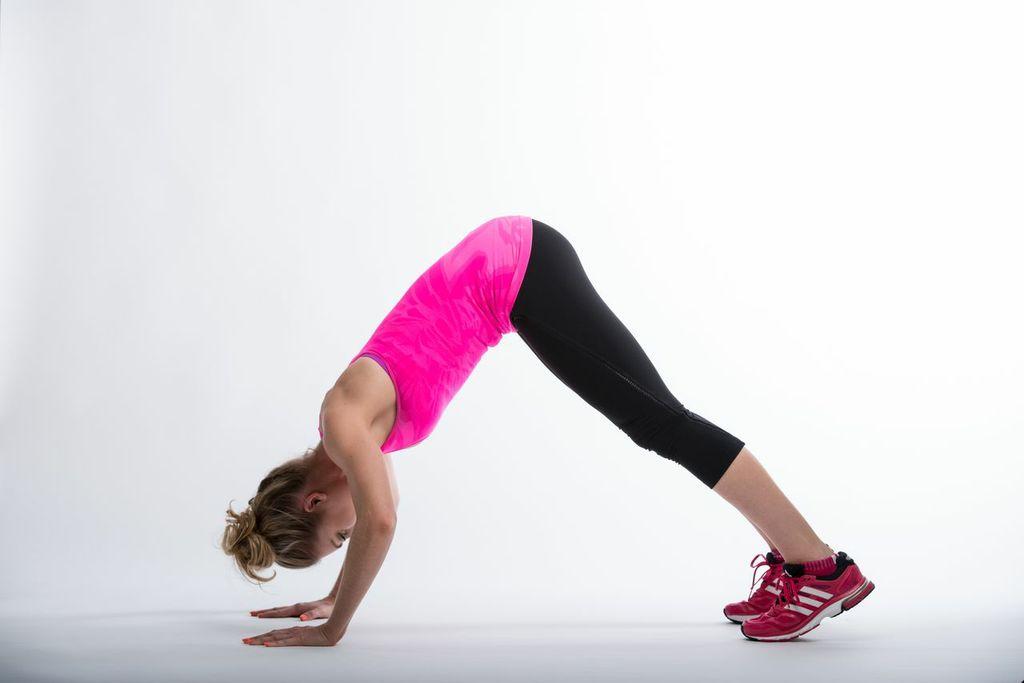
(Willis Lim/photographer, Alana Ford/Model, Brisbane Australia)
Push-ups in general are a fantastic body-weight exercise to increase strength in your upper body and core. It is great to have variation, so here is one to add to your push-up library—you do have one, right?
I love this particular push-up because of the position you work from. This pose is known as downward-facing dog in yoga and is used to build upper-body strength, but most importantly it dramatically increases the flexibility in the back of your legs and stretches your back. For most people, both of these areas are usually quite tight.
This push-up variation works your shoulders and upper back, more than a normal push-up, which focuses more on the chest.
1. Start in a downward-facing dog pose: feet hip-width apart, hands on the floor shoulder-width apart. Press your hips toward the ceiling. Then press your chest toward your thighs, and stretch your heels down toward the floor.
It’s a good idea to do the movement with your body parallel to a mirror so you can check that your body is actually in the position your mind thinks it is in.
2. Now widen your hand position so your hands are about a foot away from either side of your head. Inhale and bend your elbows, lowering the top of your head toward the floor so that it comes down between your hands.
3. Exhale and press back up. The closer to the floor you go, the more challenging it is. Aim for 10–15 push-ups.
Marching Glute Bridge

(Willis Lim/photographer, Alana Ford/Model, Brisbane Australia)
Bridging is one of the best exercises for spinal health and mobility and also targets your hamstrings and buttocks.
The sedentary nature of modern lifestyles has created lots of muscular imbalances in our bodies. One very common one is over-active quads (the muscles at the front of the thighs) and underactive glutes.
Tightness in one section of the body is rarely isolated and can lead to problems in your back, neck, hips, or other joints. So it is important to keep your body balanced by doing movements that strengthen the weak muscles and stretch and loosen the tight ones.
1. Lie on your back with your knees bent and feet approximately a foot from your body. Place your hands palm down a few inches from your body.
2. Inhale to prepare for the movement. Exhale as you engage your lower abdominal area. Press your lower back into the floor and begin to lift your spine away from the floor one vertebrae at a time, starting at your tailbone.
Try your best to move slowly and articulate your spinal column all the way to the top.
3. Hold the bridge position and lift your right leg up with your knee at a 90-degree angle. Lower it back on the floor and repeat with the left leg.
4. As you lift your legs, try to keep your body stable so the only movement taking place is your leg lifting up and down. If at first it’s too difficult to stay still, prop your hips up with your hands for support and stability.
Do 10 alternating leg lifts as you hold the bridge. Then lower back down. Repeat this twice.
T-Twist
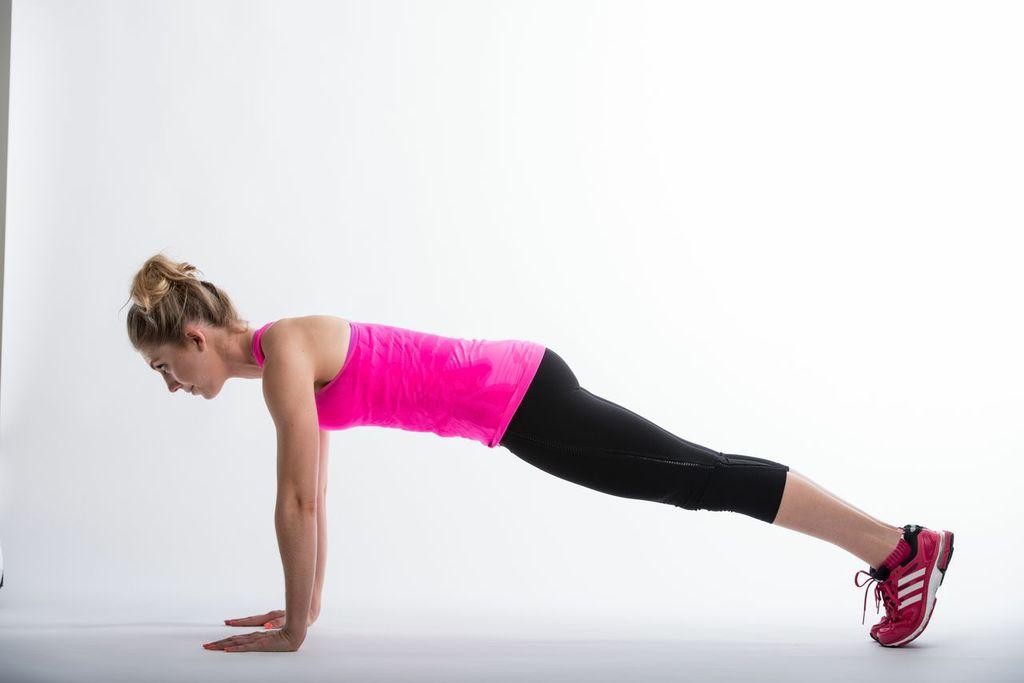
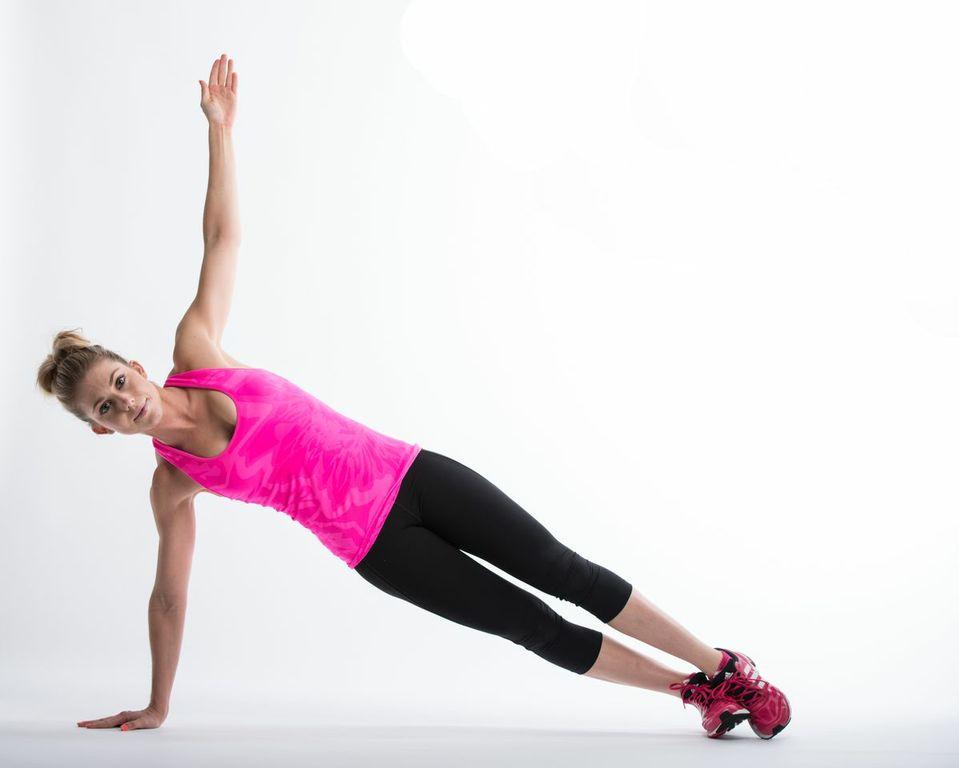
(Willis Lim/photographer, Alana Ford/Model, Brisbane Australia)
All plank and hover positions are great core strength exercises. The T-twist adds in a rotation while in the plank pose that adds stability and helps engage your obliques (the muscles running along either side of your abdomen).
1. Start in a plank position with your hands on the floor directly under your shoulders, your back straight, and lower abdominals engaged.
2. Rotate your body to your left side, extending your right arm above your head, making the shape of the letter “T” with your body and arms.
3. Hold the T-shape for five seconds, and then rotate back to the plank position. If you need a rest, lower down to all fours between rotations. If not, rotate to the opposite side straight away.
Do four rotations to each side, alternating between left and right.
Emma-Kate Stampton certifies Pilates instructors and is a certified personal trainer. With 10 years of industry experience, she is passionate about sharing the gift of health and well-being. Emma-Kate is based in Brisbane, Australia.




